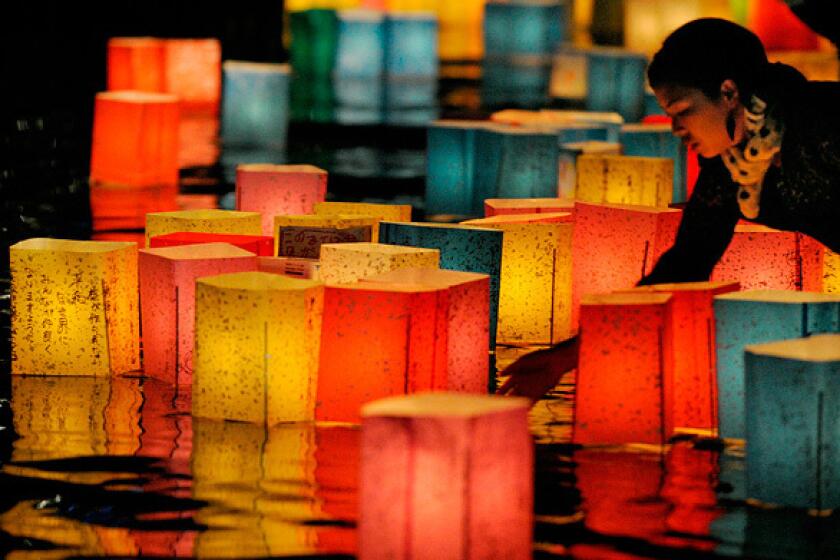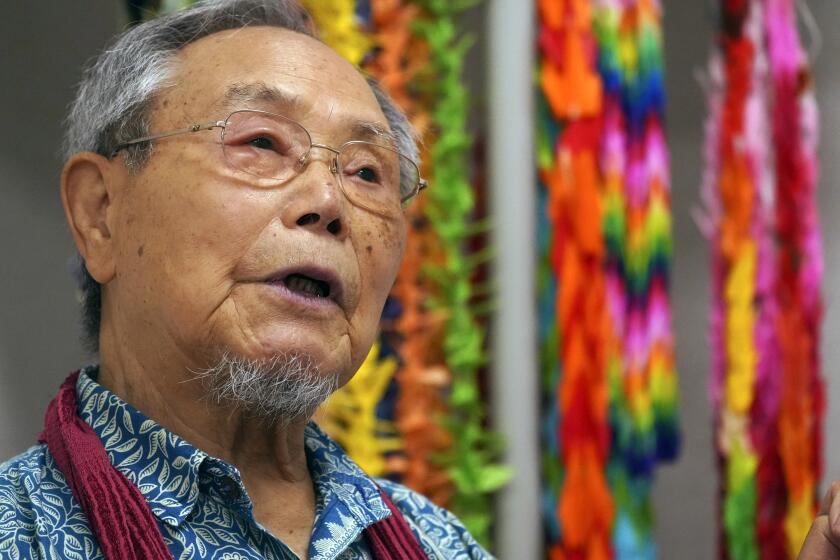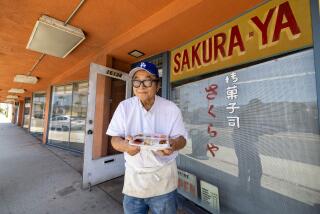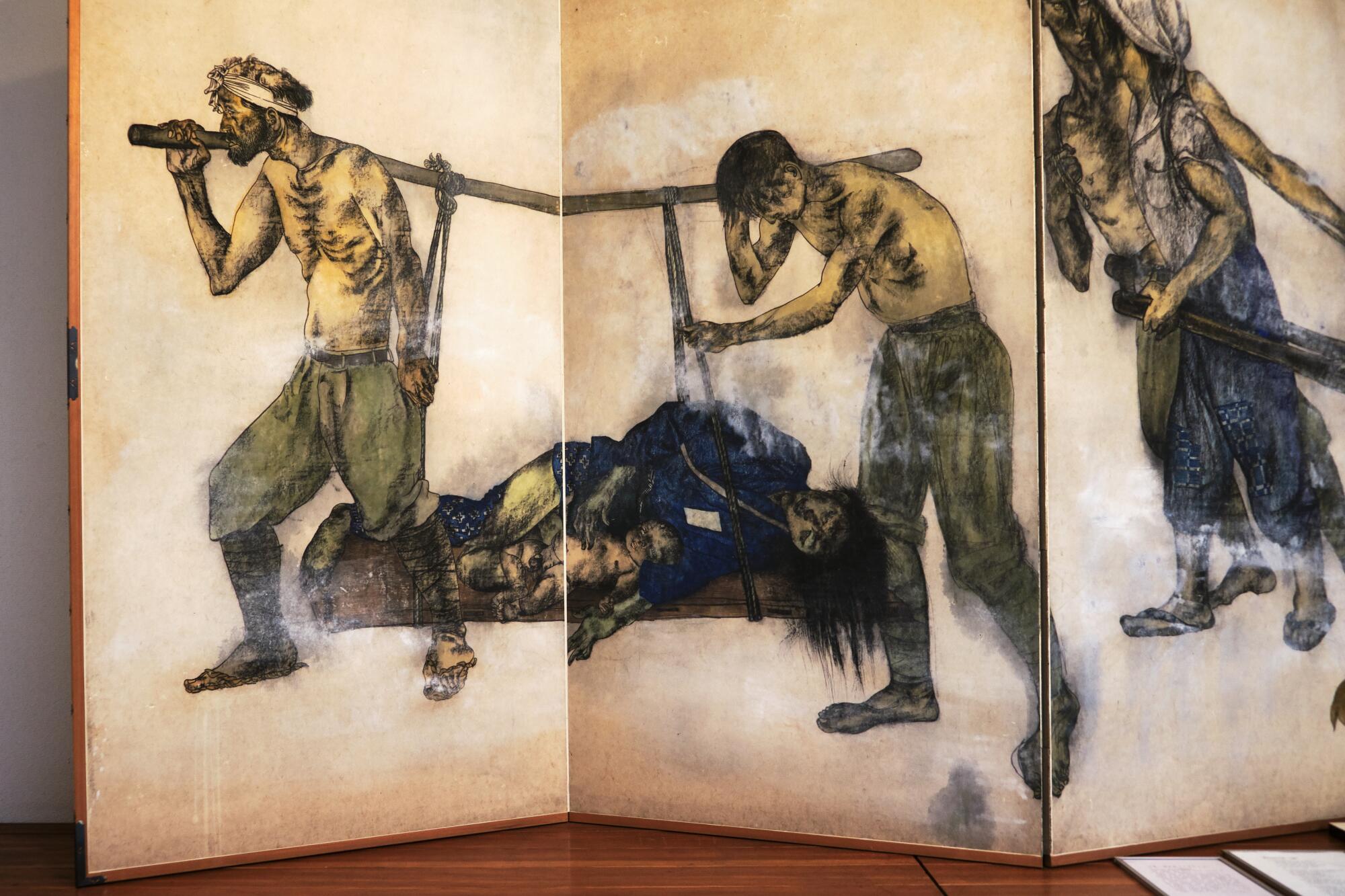
HIGASHIMATSUYAMA, Japan — Pika. It means glitter or flash in Japanese. It’s what survivors of the atomic bombing of Hiroshima remember from exactly 75 years ago. The flash that popped in a blue cloudless morning sky. Followed immediately by a brilliant blue-white light that was far stronger and erased all shadows.
Survivors say they heard no sound.
Then the city of Hiroshima — homes, barracks, hospitals, factories, government offices, rice paddies, schools, street cars — simply vanished, along with Japanese soldiers, American prisoners of war, farmers, grandparents, schoolchildren.
An estimated 140,000 died. The shockwave leveled a two-mile radius and threw people into the air, bodies raining down in trees and bamboo thickets. Survivors in the rubble found themselves naked, their clothes blown away or burnt off. Those who had instinctively raised their arms to block the flash had their skin flayed off. Glass and metal pierced ash-blackened bodies. Buildings were flattened. Fires raged.
You don’t have to be Japanese or remember World War II to be shocked and inevitably transformed by the life-sized art that records these memories at the Maruki Gallery for the Hiroshima Panels in Saitama prefecture, about an hour north of Tokyo.
It is a beautiful and terrible experience to take in the combined vision of the panels’ wife-and-husband creators, Toshiko and Iri Maruki. Their searing stories rendered in ink and rice paper take the suffering of war to a different level beyond even Guernica or Goya.
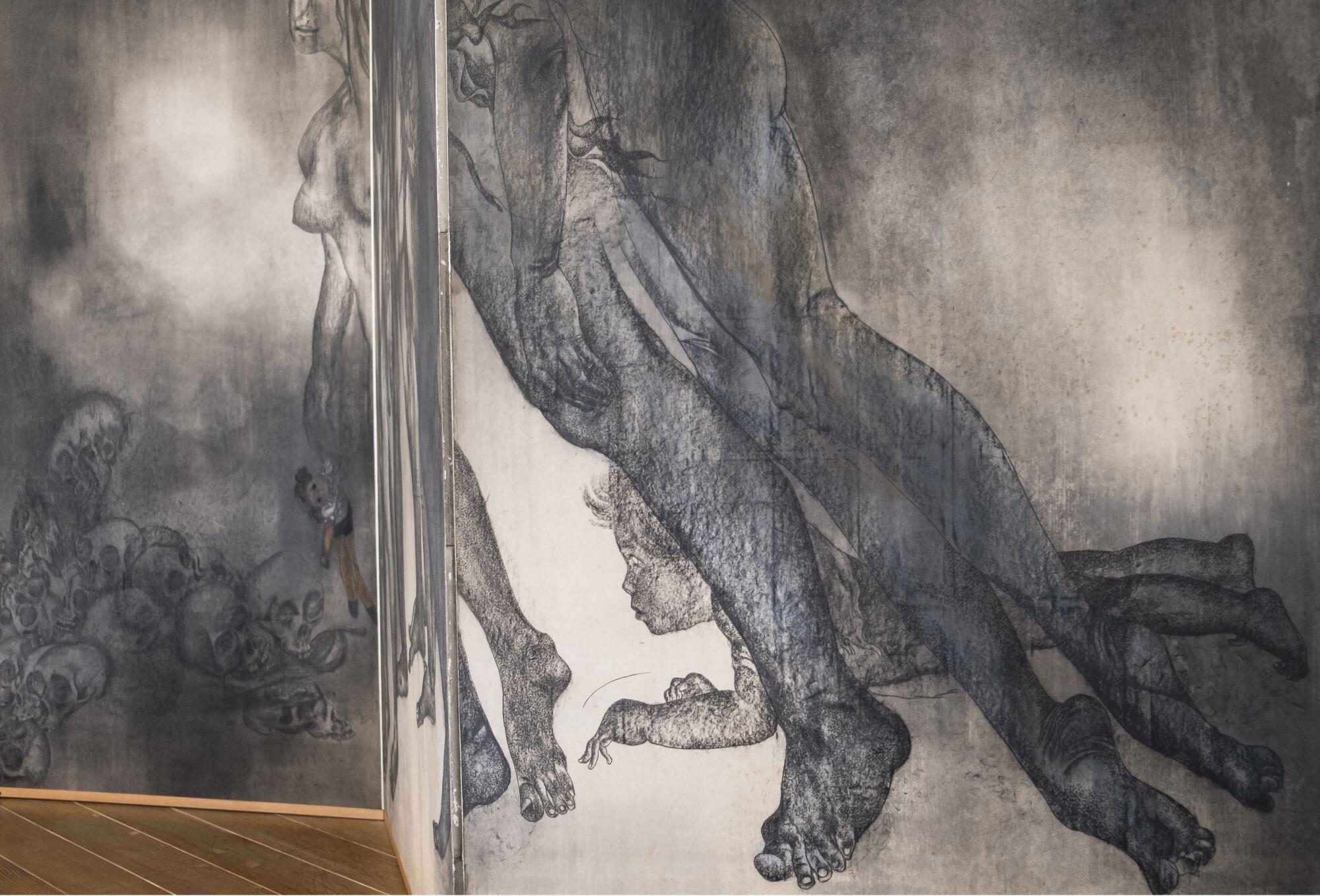
The artists’ caption to a panel titled “Ghosts,” showing survivors walking the streets with arms outstretched, pleading for water, says what the rest of the world initially did not see:
With hands lifted half up, they were ghosts in procession.
Dragging their ragged skin behind them exhausted,
they fell down moaning in heaps and died one after another.
For decades, the human experience of an atomic bombing was censored by the Allied occupation. Japanese newsreel footage, photos and eyewitness accounts were repressed. Photography of building destruction was circulated, but not images of survivors — not until occupation ended in 1952.
Before that, there was the Marukis’ art. Their Hiroshima Panels consisted of 6-by-24-foot scroll paintings done in a mixture of Iri’s traditional sumi-e and Toshiko’s Western-style figurative painting. They depicted the bomb’s effects from the survivors’ point of view in gruesome detail.
In “Ghosts,” figures crowd the canvas at eye level, their features scorched and twisted from the blast, moving inexorably toward a pile of carcasses. A dead baby lies underfoot, and a dark stain of ink hangs over all, smearing bodies with smoke and black rain.
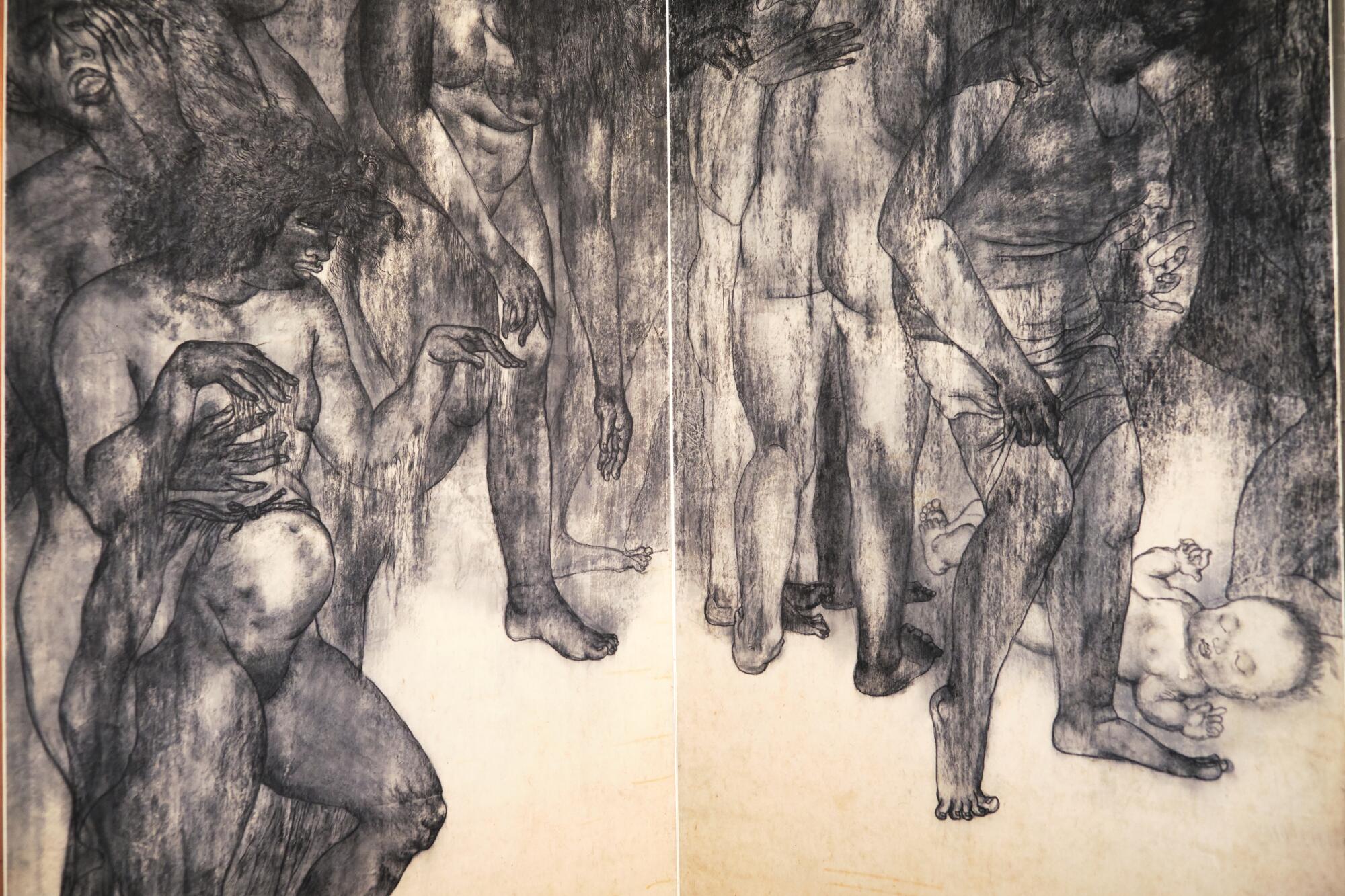
Iri, a native of Hiroshima, took the first train south from Tokyo once he heard that a new weapon had been dropped on the city. He arrived on Aug. 9, the day the U.S. dropped the second atomic bomb on Nagasaki. Toshi, as she was known, followed a few days later.
Together they removed bodies, repaired homes, collected food for the injured. They stayed a month.
“We carried the injured, cremated the dead, searched for food and water, made roofs of scorched tin sheets, wandered about just like those who had experienced the bomb,” they wrote later.
We’ve been taught that the U.S. had to drop atomic bombs on Japan to end World War II. Historical evidence shows Japan would have surrendered anyway.
A few years passed. The couple was living in the country outside Tokyo, and Toshi was suffering from radiation poisoning. They craved fresh surroundings.
“They were at the end of this dirt road in the middle of nowhere,” said Charlotte Eubanks, a professor of Asian studies at Penn State University who published a biography of Toshi, “The Art of Persistence: Akamatsu Toshiko and the Visual Cultures of Transwar Japan,” in December.
“It was summer — humid and rainy. And she said to Iri, ‘We’ve seen things that if I die and I haven’t painted them, they will be lost. And if you die, they’ll be lost. No one else is painting these things. We don’t have anything to lose.”
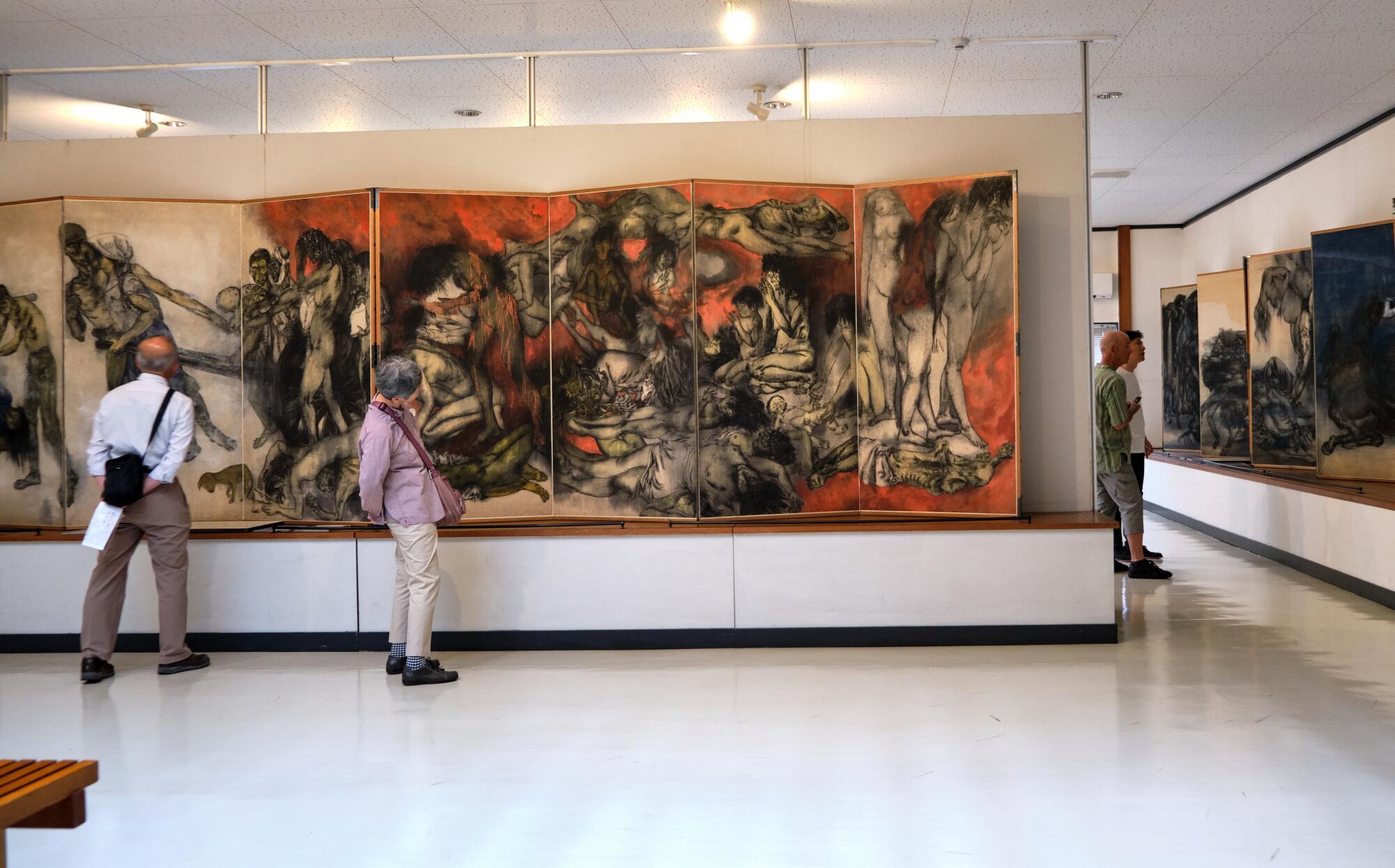
Although they risked jail, Eubanks said, the artists began sketching, talking to survivors and collecting memories to tell a story visually.
The first panel was “Ghosts,” drawn on rice paper from the descriptions of those on the ground and what Toshi and Iri had witnessed. That was followed within a year by “Fire” and “Water.”
The complex marriage of the two artists’ styles is vividly obvious in “Fire,” with Iri’s stylized traditional flames licking at the bodies of the living. He wanted to use gold to depict hell, as in medieval Buddhist and Japanese scrolls, but he had to settle for vermillion.
In “Water” the main figure is a mother holding her dead child as bodies clog a river, the only escape from the fires. In “Bamboo Thicket,” Iri’s technique is foremost in the somber wash and the brushwork of bamboo branches bent from the blast. Huddled within the thicket are Toshi’s naked walking dead, clustered for protection.
For two years the art traveled around Japan, rolled-up as scrolls, carried in a wooden box and used as agit-prop illustrations at town meetings, city museums and village gatherings in talks about what had happened at Hiroshima and Nagasaki.
The caption for “Fire” opens with:
“PIKA!” The blue-white light of the flash
the explosion—
the force—
the heat wave—
Never in heaven or on Earth
had humankind experienced this.
Later, the caption continues:
Some fell senseless under fallen debris,
others desperately digging out.
All consumed by the crimson.
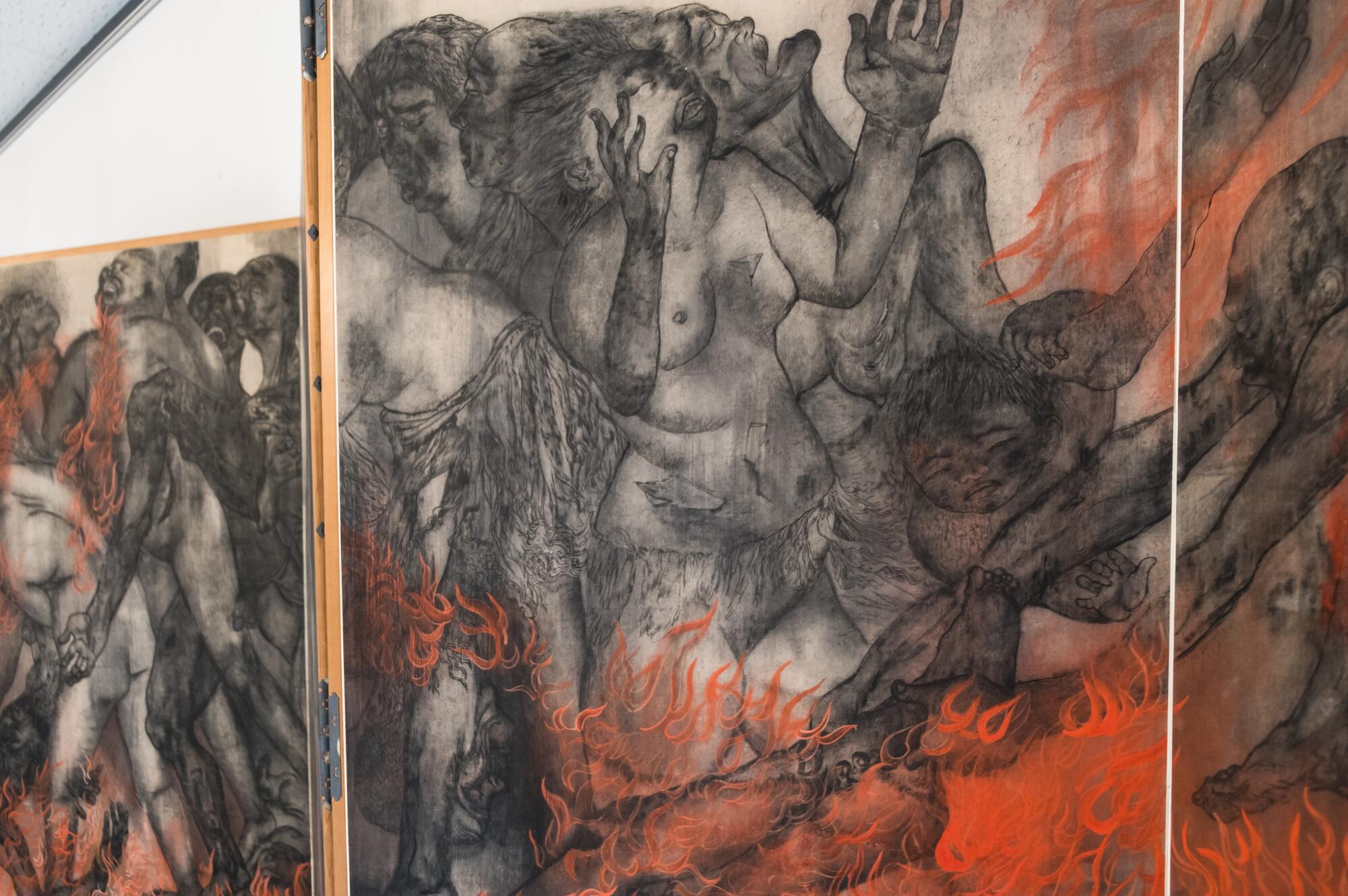
The poetic text that accompanies each panel is ascribed to Toshi but was continually reworked with poet and calligrapher Iri while the couple toured Japan and asked people to share their memories.
The stories that the panels tell are reminiscent of the vernacular in ancient Buddhist hell scrolls, Eubanks said.
Born Toshiko Akamatsu, Toshi was the daughter of a Buddhist priest and raised in a temple in rural Hokkaido. She would have seen the hell scrolls growing up. The panels were a collaboration, but Toshi was the driving force.
“It was her idea to make them,” Eubanks said. “And her idea to continue to make them, to tour the country with them, to have written explanations of what was going on in the panels.”
Iri was trained in traditional Chinese ink and wash painting. He was influenced by the Surrealism movement and was known for his ability to impart depth in his large canvases. Toshi worked as an illustrator and had been schooled in Western charcoal nudes and oil painting.
Their process was at times combative, more a fight than a partnership. While Toshi sketched her figures on paper, Iri would critique and sometimes splash his own ink over her drawings because they were too direct for his abstract aesthetic. Sumi-e treasures the spontaneous gesture, the value of uncluttered empty space.
Undeterred, Toshi would sketch in the figures again, layering the images.
They were “oil and water,” said historian John Dower, who produced an Academy Award-nominated documentary about the artists in 1986, “Hellfire: A Journey From Hiroshima.”
Encouraged by a survivor at their first showing of “Ghosts” in 1950, the Marukis went on to make 15 panels together over the next 36 years. Their later artworks shifted from the aftermath of Hiroshima to inhumanity in other places: Nanjing, Auschwitz, Bikini Atoll, Minamata.
“Empire and colonization and war are all types of structural violence,” said Eubanks, citing a Japanese city infamous for mercury poisoning. “Minamata was connected to the war industry. It seems all of a piece. Hiroshima was their entrance.”
Iri died in 1995, Toshi in 2000.
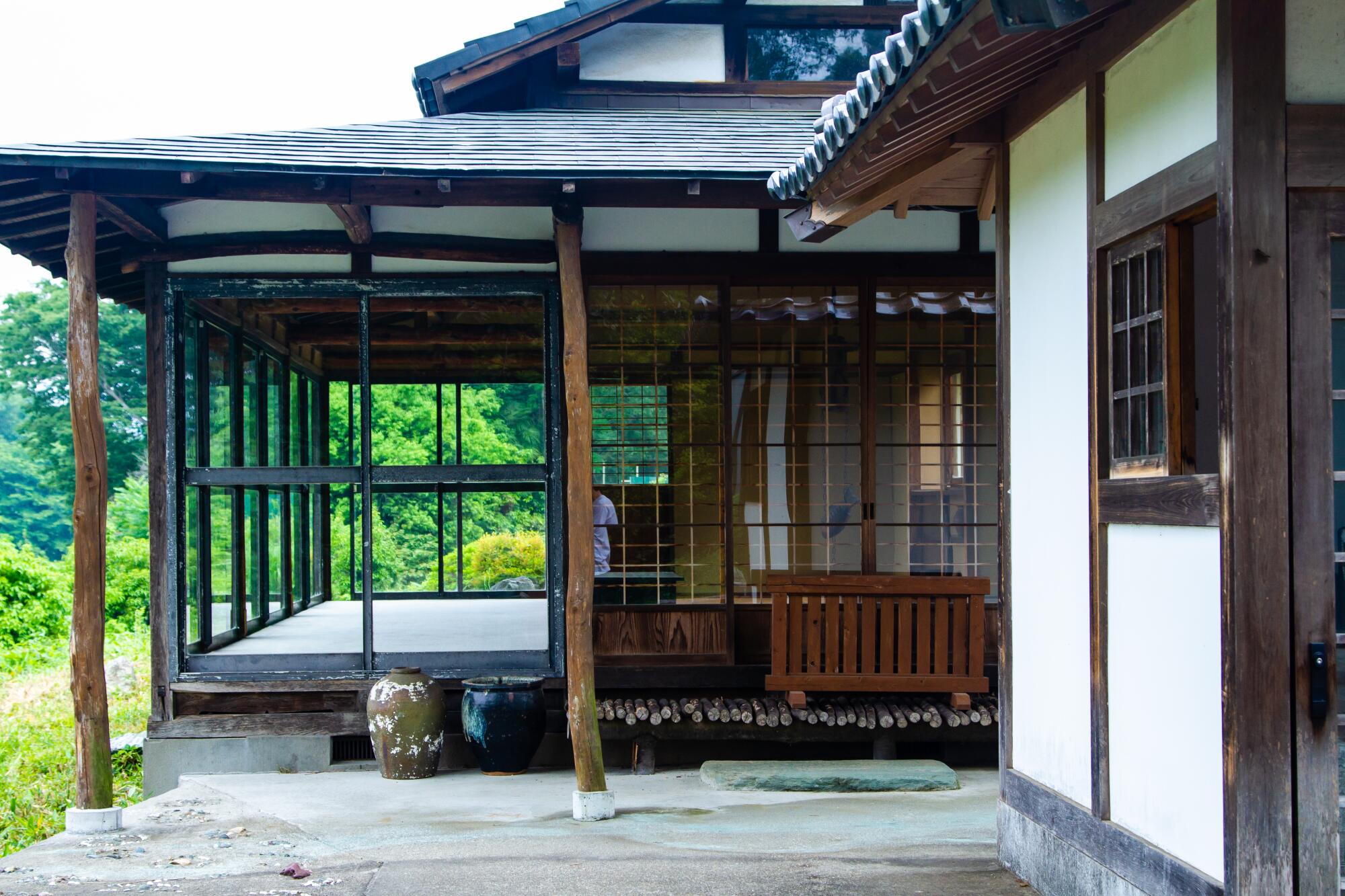
The couple’s Maruki Gallery, opened in 1967, is in the town of Higashimatsuyama. It is a few minutes by taxi from the local train station, in a quiet suburban neighborhood.
Planted around the gallery are chestnut oak, cherry, redwood, plum, magnolia. Every Aug. 6 it holds a festival to honor ancestors and floats paper lanterns down the Toki River.
Just outside the main building is a temple to Kannon, the Buddhist goddess of mercy. It is built from sections of Iri’s partially demolished family home in Hiroshima. The statue comes from a temple destroyed there. The structure is bedecked with folded paper cranes left by visitors.
Inside the gallery, 14 of the Hiroshima Panels are on view. (The 15th, “Nagasaki,” is owned by the Nagasaki Atomic Bomb Museum and is on permanent display there.)
The panels are fragile and lack proper protection from humidity and sunlight. Insects have damaged the artworks. The gallery has launched a preservation fund to restore the original panels, create replicas and construct a new building for public viewing.
“They underwent some pretty rough treatment,” Eubanks said of the panels. “They would be disassembled and rolled up and stuck on backpacks, traveled all over Japan, and hung again.”
Yukinori Okamura, the curator and managing director of the gallery, first saw the panels as a high school student in Tokyo.
“I saw them in a schoolbook and was very shocked,” he said. “But they are beautiful. Terrible but beautiful.”
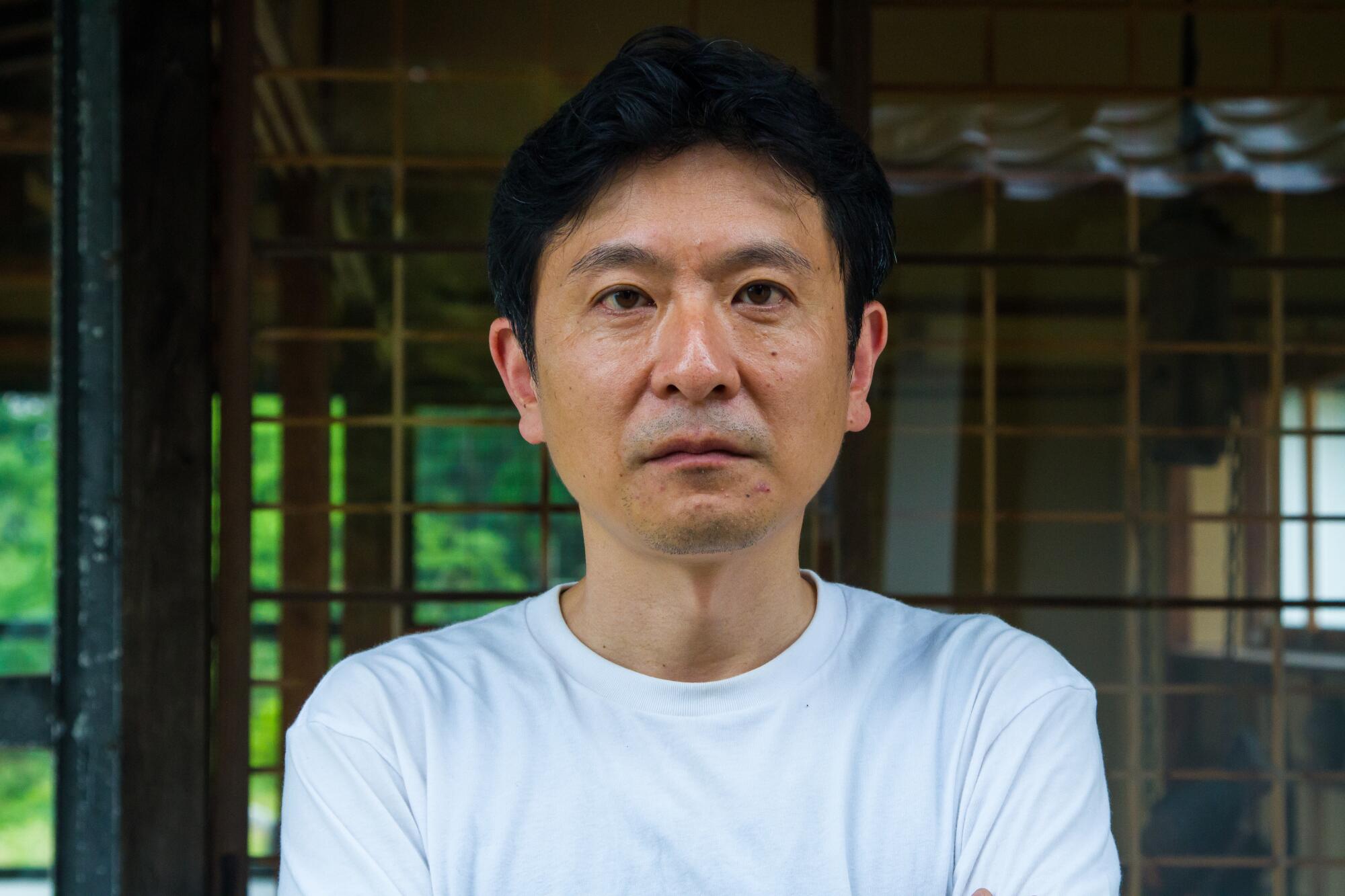
In “Atomic Desert,” the eye is immediately drawn to a naked mother trudging through the desolation holding a doll. Some of the figures have glass shards protruding from their bodies.
Toshi fought a battle within herself as instinct pushed her to draw beauty instead of ugliness. Japanese viewers were repelled by the brutal imagery, but even then one of the earliest critiques from survivors was that the reality was much worse that what the art portrayed.
These days, few of them are alive and want to revisit the horrors of the war years. But they still come to the gallery, sometimes with grandchildren.
Outside, in the small temple, they can read a poem by Sankichi Toge, a noted Hiroshima poet and bomb survivor.
Okamura struggled with the translation, saying they are very old words.
You have to endure this image
You have to walk from this picture
You can never forget this history.
This world’s first atomic bomb attack hit Hiroshima 75 years ago this week. Time is running out for survivors to tell their stories.
More to Read
The biggest entertainment stories
Get our big stories about Hollywood, film, television, music, arts, culture and more right in your inbox as soon as they publish.
You may occasionally receive promotional content from the Los Angeles Times.
